Gaoyou: The six names of the ancient canal city have been handed down from ancient times to the present.
Gaoyou, a county-level city belonging to Yangzhou, has been called Shennong County, Yucheng, Ping ‘a, Sana ‘a and Gaosha for thousands of years. The organizational system in past dynasties was different from county, county, army, state, road and government, but the name "Gaoyou" has been inherited to this day.

Gaoyou Shenju Mountain
Prehistory: the fragrance of rice flowers 7,000 years ago
Between 7000 and 5000 years ago, there was a primitive culture with unique cultural features and complete cultural series in the Jianghuai basin, which was confirmed by experts at the 1997 Long Qiuzhuang Site and the Symposium on Ancient Culture in Jianghuai Area. The most precious thing is that carbonized rice was unearthed in all cultural layers of the site, which was identified as artificially cultivated japonica rice. Its discovery advanced the history of artificially cultivated rice in China to 5,500 years ago, and the cultivation area was divided from the south of the Yangtze River to the south of the Huaihe River.
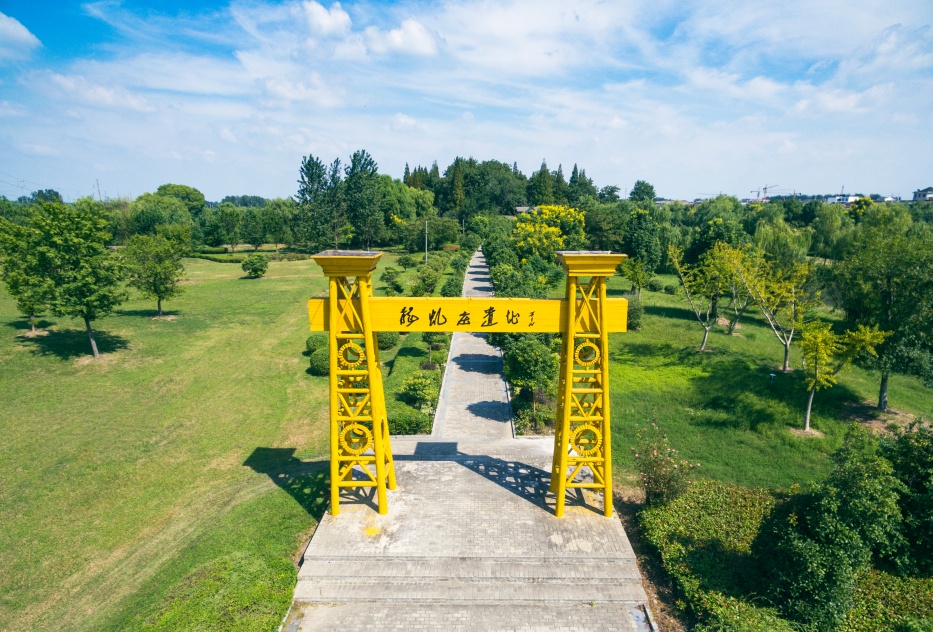
Longqiuzhuang Site
Qin: Build a high platform and a postal kiosk.
In the late Spring and Autumn Period, Fu Cha, the king of Wu, dug a ditch, and after the unification of Qin, he built a gallop, which made Gaoyou at the crossroads of land and water transportation between Jianghuai and Jiangsu. In 223 BC, Ying Zheng, the king of Qin, built a high platform and a postal kiosk here, so it was called Gaoyou, which is the only city named after "postal" among more than 2,000 counties and cities in China.
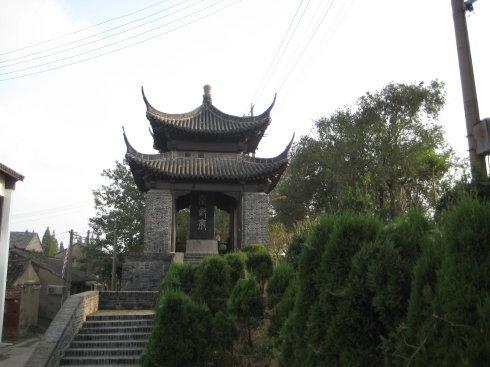
Qinyou pavilion
Han Dynasty: Jia Hesheng, Shennong County
In the fifth year of the inaugural ceremony of Emperor Wu of the Western Han Dynasty (the first 118 years), gaoyou county was located in Guangling, where Gaoyou City is located. Gaoyou has become an important political, economic and cultural city between the Yangtze River and Huaihe River. At the end of the Eastern Han Dynasty, the war lasted for years, and the Jianghuai area was a place of war, and Gaoyou was deserted. In the 18th year of Xian Di Jian ‘an (213), gaoyou county was abolished. After a lapse of 67 years, the first year of Emperor Taikang of the Western Jin Dynasty (280) relocated the county, belonging to Guangling County. In August (441), in the 18th year of Yuanjia of Liu Song Wendi in the Southern Dynasties, "gaoyou county Jiahe was born, and the emperor ordered it to be changed to Shennong County."
Sui Dynasty: Dredging Gully and Building Imperial Road
In the first year of Emperor Yangdi’s great cause (605), more than 100,000 people in Huainan, including Gaoyou, were collected to dredge the gully, and "imperial roads were built along the river, and trees were planted with willows". Gaoyou section of Hangou became the main channel of Hangou, and gradually formed a distinctive landscape of "Yanliu", one of the eight ancient "Qin postal sights".
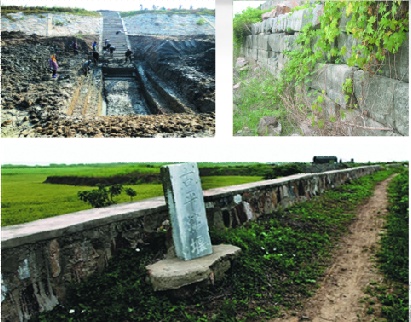
Canal old road
Tang Dynasty: Pingjin weir was waterproof.
The Tang Dynasty was the heyday of feudal society. There were 60,000 residents in Gaoyou county, and the scale of Gaoyou city was further expanded. During the reign of Emperor Xuanzong (874-888), Emperor Xuanzong raised Zen Master Zhi to build Zhenguo Temple on the foundation of Taipingfang in the southwest of Gaoyou Institute, where he practiced. In the third year of Xian Zongyuan’s reign (808), Huainan made Li Jifu build a Pingjin weir in Gaoyou to regulate the water level and prevent water from being invaded.
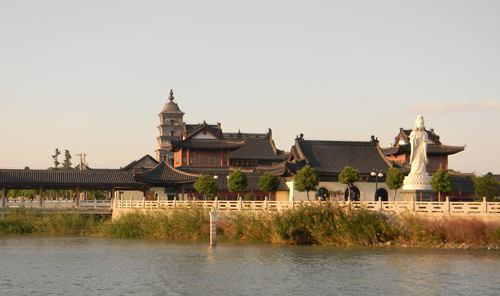
gaoyou zhenguo temple
Song Dynasty: Dayi where boats and cars meet.
Song Dynasty is a heyday of Gaoyou city construction, trade and cultural development. In the fourth year of Kaibao (971), Gaoyou Army was set up, and the imperial edict said: "Only he Gaoyou was called Dayi in ancient times. When boats and cars meet, land and water will rush. It is advisable to build a name for the army and look at it with pride. " Knowing that the army is high, it is necessary to build Gaoyou city. The city wall is slightly square, with a circumference of 10 miles and 316 steps, a height of 2.5 feet and a width of 1.5 feet. There are trenches all around. The street in front of the military headquarters was initially formed, with Minglun Hall and other related buildings, which became the political and cultural center at that time.
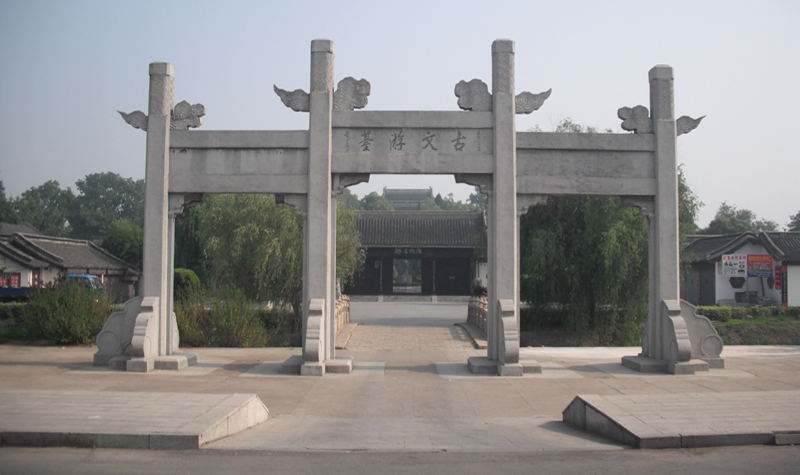
Wenyoutai
Yuan Dynasty: Kyle Polo once walked.
In 1283, Yuan Shizu changed Gaoyou Road to Gaoyou House, which governed Gaoyou, Xinghua and Baoying counties. In the 26th year of Yuan Dynasty (1289), Kyle Polo, an Italian traveler, visited Gaoyou along the canal and described it as "… … Gaoyou &hellip, which is well-built, extensive and prosperous; … To make a living by doing business and crafts, life must be extremely rich, rich in fish, animals and birds, and a lot of game. "
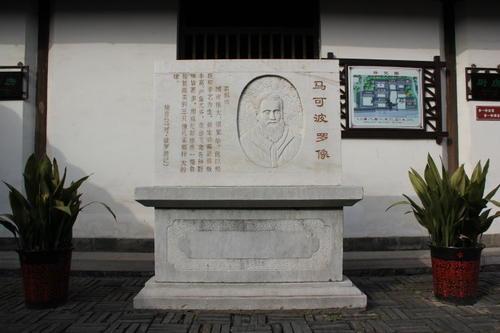
The statue of Kyle Poirot
Ming dynasty: "a street in front of the house" became a grand view.
In the first year of Hongwu in the Ming Dynasty (1368), Huang Keming of Zhizhou built the government office on the foundation of the former military office, and successively rebuilt the Xuegong, expanded the Xingtan and built the Yinyun Building. The "street in front of the house" has become a grand sight. Because of the change from sea transportation to water transportation in Ming and Qing Dynasties, Gaoyou was at an important node of water transportation and salt transportation, and its strategic position as a transit station and distribution center for grain and salt became increasingly prominent. In addition, Yucheng Post itself undertook the heavy responsibility of providing materials for the imperial court and troop transportation, which greatly promoted the urban construction of Gaoyou and the prosperity of business and service industries.
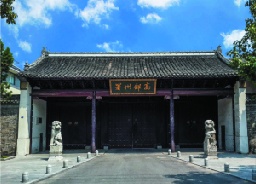
Gaoyou prefecture yamen
The area in the original city can no longer adapt to its development, so outside the south gate and the north gate, it gradually develops to the north and south ends by the canal, forming the south gate street and the north gate street, and gradually develops into the south gate block and the north gate block with clear texture and supporting functions.
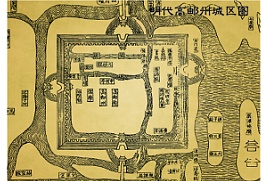
City map in Ming dynasty
Qing dynasty: a "small bridge with flowing water" in Jiangbei
In Gaoyou in Qing Dynasty, the relationship between urban construction and water became closer and closer. Many ferries, rivers and bridges are important features of Gaoyou city. According to historical records, there were 26 bridges in Gaoyou City in the Ming Dynasty, which grew to 46 in the Qing Dynasty, forming a unique charm of "small bridges flowing with water". Gaoyou still retains the names of many ancient rivers and bridges, such as Beichengzi River, Yunyan River, Yudai River, Gaogong Bridge, Fuguong Bridge, Fenghuang Bridge and Taishan Bridge.
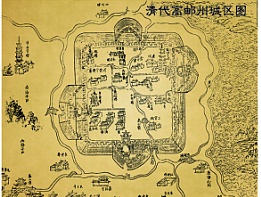
City map of Qing dynasty
After the mid-Qing Dynasty, the functions of the post station were gradually exercised by the state department, and Yucheng post station was resold to the landlord named Zhao. Due to the development of modern postal services, the traditional functions of the post station gradually lost, and in 1912, the post station was returned to postal services. After nearly 600 years of operation, Yucheng Post has been preserved as a rare legacy of post culture.

Yuchengyi
In the Qing Dynasty, Gaoyou’s commercial trade was more prosperous. According to the Third Continuation of Gaoyou Prefecture Records, there were 6 pawn shops in Gaoyou during the Qianlong period, and the number increased to 11 during the Tongzhi period. The largest and longest-running one is the North Pawnshop, which is now a state-level cultural relics protection unit.
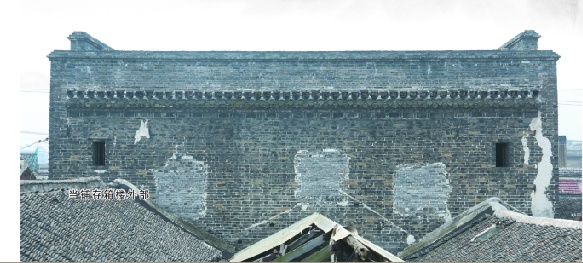
Pawnshop in Qing dynasty
In Gaoyou in the Qing Dynasty, education was generally valued, and 10 places including Zhuhu Academy, Pragmatic Academy, Huaihai School and Yixue were successively restored and founded. According to the Records of Gaoyou Prefecture, 343 authors left 707 works. The method of "seeking righteousness by sound" advocated and practiced by Wang Niansun and Wang Yinzhi is of epoch-making significance in the history of exegetics, which is called "Gaoyou Wangshi" in academic circles.

Statues of Wang Niansun and Wang Yinzhi’s father and son
Republic of China: Gaoyou on Panama Exhibition
In the early years of the Republic of China, modern transportation industries such as automobiles and ships, modern communication industries such as postal services and telephones, and modern financial industries such as banks rose one after another, county junior middle schools and county junior normal schools were established one after another, and national industry and commerce also developed by leaps and bounds. In 1914, at the Panama Games, Gaoyou produced wicker plaid, Wang Wanfeng wine and balsamic vinegar, various beans, wheat, rice and handmade products, which were classified as second-class, third-class or fourth-class products respectively.
New China: a place where people live happily.
After the founding of New China, especially since the reform and opening up, the pace of urban construction has been accelerated. In 1991, Gaoyou withdrew from the county to build a city. There are 1 World Heritage Site, 2 4A-level scenic spots, 5 3A-level scenic spots, and 6 national key cultural relics protection units: Yucheng Post, Longqiuzhuang Site, Gaoyou Pawnshop, Gaoyou Ancient Canal in Ming and Qing Dynasties, Zhenguo Temple Tower and Pingjin Weir. Gaoyou folk songs have been included in the national intangible cultural heritage list, and Gaoyou section of the Canal has been included in the World Heritage list.
In 2018, it was ranked 21st in the list of China’s top 100 happy cities and "Top 100 Gourmet" in China.